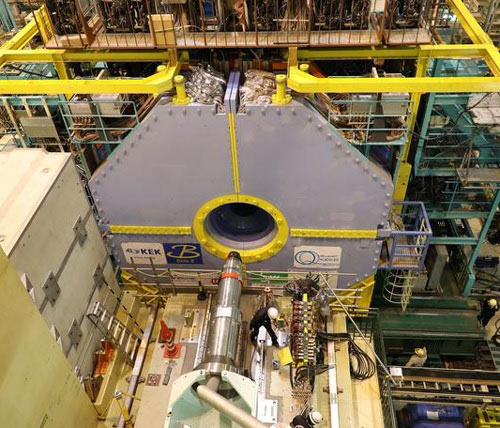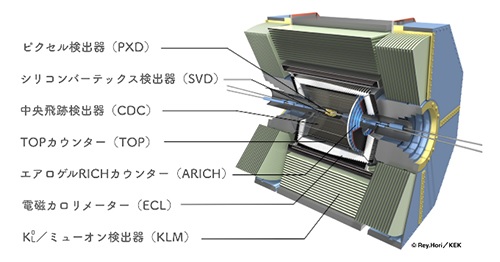News
First Elementary Particle Collision Observed through Super KEKB Updated in June 2018
KEK, the High Energy Accelerator Research Organization (Tsukuba, Ibaraki Prefecture) announced on March 26 that it succeeded in using its new accelerator "Super KEKB" to collide particles. The super KEKB aims to clarify how the universe was born by reproducing similar environments immediately after its birth. Since its start-up on March 22, this is the first step towards achieving the ultimate goal.
Particles are the smallest unit of matter. According to KEK, the experiment started after 10 p.m. on March 25. Electrons, an elementary particle, and positrons, which have opposite properties, were accelerated to near light velocity on March 26. It was confirmed that KEKB had collided at 0:38 a.m. On March 26, the research team will precisely examine the condition of collided particles by using Belle II.
Super KEKB is the largest circular accelerator in Japan, measuring 3 kilometers in circumference. It is built 10 meters below ground. In order to drastically improve the performance of KEKB, which had been operated until 2010, went into upgrade work in the same year and the work was almost complete in spring 2016. In April 2017, Belle II was installed to detect and capture how particles collide. Compared to KEKB, the frequency of collision between electrons and positrons inside a vacuum pipe has increased 40 times in super KEKB, and the collision speed has reached the speed of light.
https://www.bmj.com/content/360/bmj.k671


PXD: Vertex Detector
SVD: Silicon Vertex Detector
CDC: Central Drift Chamber
TOP: TOP Counter
ARICH: Aerogel RICH Counter
ECL: Electromagnetic Calorimeter
KLM: KL Muon Detector







